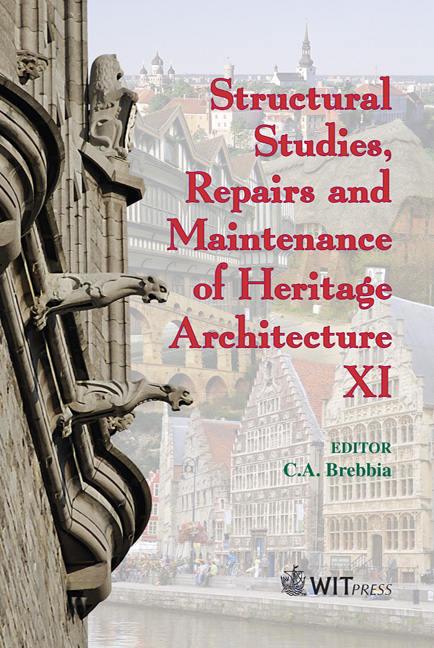Characterization Of Space Around Japanese Traditional Buildings: Transitions Of Layout Plan And Meaning Of Space Of Darkness Inside Wooden Temples
Price
Free (open access)
Transaction
Volume
109
Pages
12
Page Range
47 - 58
Published
2009
Size
1,939 kb
Paper DOI
10.2495/STR090051
Copyright
WIT Press
Author(s)
M. Yasuhara & T. Sakiyama
Abstract
Transitions of layout plans of Japanese traditional wooden temple buildings started in Asukadera Temple Compound in 588 A.D. In this temple compound, the Pagoda (Tower) and the Main Hall (Golden Hall, Kondo) are surrounded by Peristyle (Kairo). The Pagoda and the Main Hall are placed inside the Peristyle and the court. The buildings (Pagoda and Main Hall) surrounded by the Peristyle are important constituents of the temple buildings. Initially, the Pagoda used to be placed in the center. In the next transition stage, the Pagoda and the Main Hall stand parallel side by side. In the next stage, the Main Hall is placed in the center. In the following stage, the Main Hall is still the principal building of the layout, but the Pagoda goes outside of the Peristyle. Thus, the importance of buildings shifted from the Pagoda to the Main Hall. There are common characteristics among the Japanese traditional temple buildings, such as the Pagoda and the Main Hall, which have a huge space of darkness inside the building. Except for the first floor of the building, there exist only structural members without any floors. Furthermore, facades of the buildings have dummy windows, which cannot be opened to let the air and the natural light come in. It means these windows are meant merely for their external appearance. Thus, these buildings are designed only for the facade without giving any consideration to the interior space, except for the first floor. Keywords: space of darkness, temple, Horyuji, tower, Pagoda, peristyle, history of architectural space, traditional architecture, corner detail, façade, center.
Keywords
space of darkness, temple, Horyuji, tower, Pagoda, peristyle, history of architectural space, traditional architecture, corner detail, façade, center




